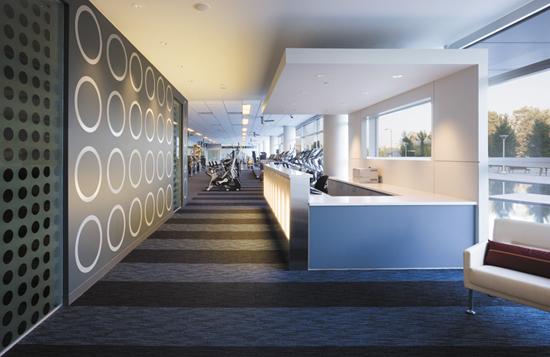State of the Corporate Market - April 2010
By Darius Helm
Traditionally, commercial carpet mills have done the majority of their business in the corporate sector. However, after the commercial slowdown at the turn of the century, most of the mills wised up and started a strategy of diversification, targeting sectors like healthcare, education and government.
When the credit crisis hit in the fourth quarter of 2008, every commercial sector felt the impact, though none as much as the corporate sector where business dried up almost immediately. By some estimates, that sector was down by 25% to 30% last year.
Despite all the diversification by carpet mills, the corporate sector remains its biggest market, so all of the big players felt the impact last year. And according to most, this year isn’t much better. Nobody expects sales to plunge like they did in 2009, but nobody’s predicting growth either.
Reports from design firms and contract dealers suggest that some projects put on hold in the months following the credit collapse are being started up again, though often with slimmer budgets. And following a culling of the ranks that by some accounts resulted in the dismissal of close to 50% of the architects and designers out there, A&D firms here and there are starting to hire again. But even if all of this turns out to be true, and assuming things continue to move in the right direction, it will be at least six to nine months before that activity trickles down to flooring manufacturers in any significant way.
So this year will likely show no growth in the corporate sector, even if the other sectors strengthen and somehow commercial manufacturers end up with a flat year—which is pretty unlikely.
Furthermore, the market is unlikely to come roaring back. Pent up demand will certainly help jumpstart momentum, but austerity is the order of the day, and it will take some time for even the most rational exuberance to take hold.
There’s still business out there. If a market is down 20%, that still means that four out of every five jobs are proceeding. But these days, getting those jobs is more competitive. Clients are shopping harder and negotiating harder, and budgets are tighter.
All this pressure on budgets is shifting the decision making from design firms to end users, and savvy manufacturers are working to strengthen relationships with contractors, property managers and other decision makers to ensure that it’s their product that ends up being specified.
Design firms report that in lieu of projects, they’re being kept busy by an increase in RFPs (requests for proposals). For some, that shift started soon after the recession. After all, commercial real estate prices have come down significantly, so it makes sense that people would want to explore their options and see if it’s worthwhile to take advantage of the down market.
RFPs are a standard part of A&D business, and they generate some badly needed revenue, but they usually lead to a lot more work than what’s actually taking place in the market. Ultimately, it’s low yield busy work.
The overall sense in the A&D community is that we are on the cusp. It’s still too early to say definitively that the market is coming back, but absent any more crises it wouldn’t be surprising to hear some sighs of relief in the next quarter—say, by the NeoCon show in June.
As business comes back, it will first appear as renovation work, along with some relocation. There are reports of increases in lease renegotiations, and some carpet manufacturers are even talking about activity in the tenant improvement side of the corporate market. But few expect much in the way of new construction in the next couple of years.
Regionally, the biggest metro markets took the biggest hits. New York, as the financial capital, was perhaps hardest hit. California, with the exception of the northern technology regions, also suffered, as did Chicago. Auto centers like Detroit fared particularly poorly.
In general, corporate slowdowns occurred in regions that suffered the most from the housing collapse. Those that didn’t fare as badly, like Texas, which was buoyed both by its organic rather than speculative housing growth along with its oil industry, have also shown stronger corporate activity. The Southeast and parts of the Midwest have not suffered as much as the West and Northeast.
For an update of corporate market manufacturers, see the April 2010 issue of Floor Focus Magazine.
Copyright 2010 Floor Focus
